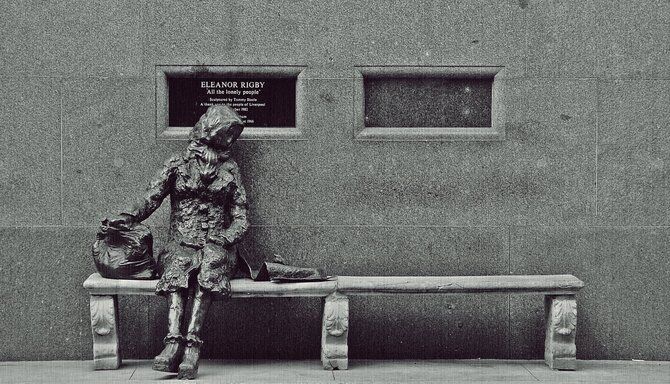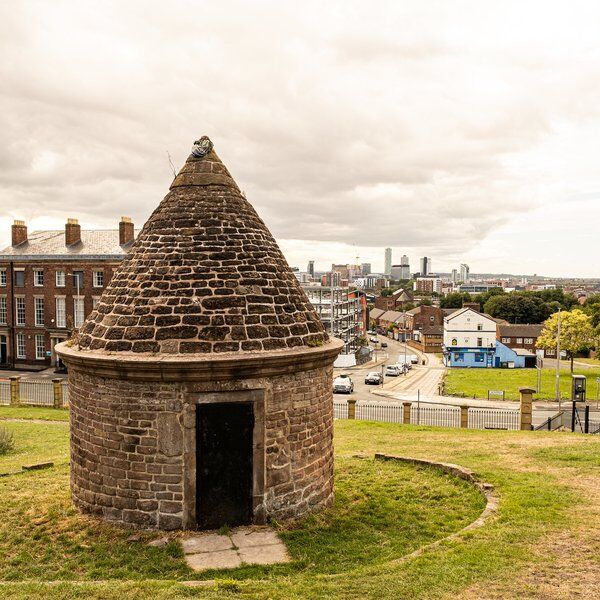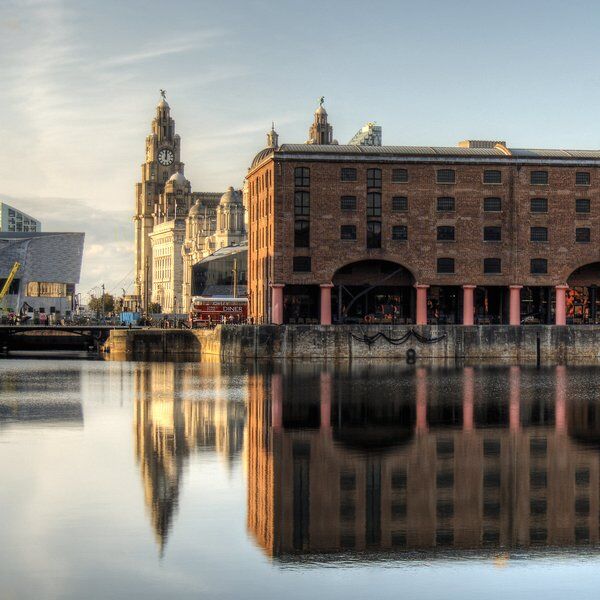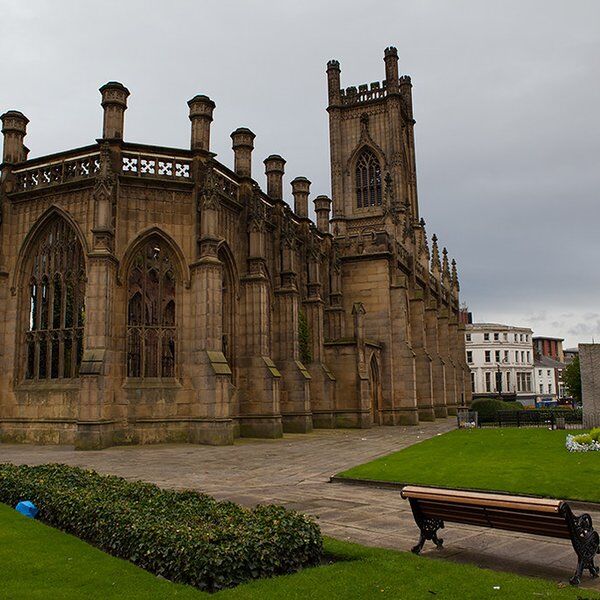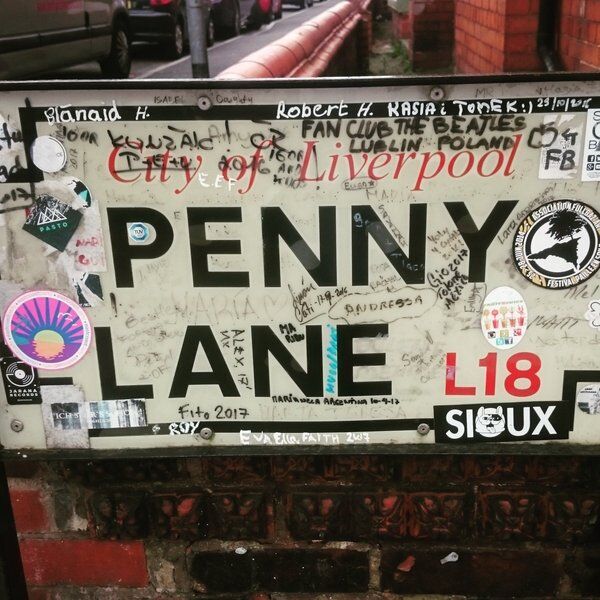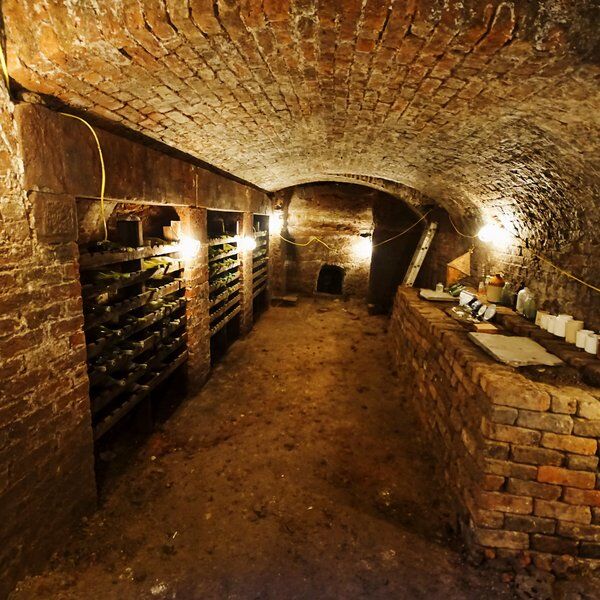Eleanor Rigby's Final Resting Place
Liverpool is renowned for its rich music culture. It is the birthplace of The Beatles and the final resting place of Eleanor Rigby, who has been immortalised in the eponymous Beatles’ song. Now, whether the Eleanor Rigby that is buried in St. Peter’s Parish Church, Woolton and the lonely lady featured on the “Eleanor Rigby” soundtrack are actually the same person, is a highly debated topic. But despite this curious detail, her grave has become a place of pilgrimage for fans of the popular Liverpudlian band.
Eleanor Rigby and The Beatles Connection
The hauntingly beautiful song "Eleanor Rigby" was penned primarily by Sir Paul McCartney, with significant contributions from John Lennon, and released as part of The Beatles' iconic "Revolver" album in 1966. The song weaves a poignant narrative on loneliness, drawing inspiration from real-life events and people.
“I wanted to make it more poignant… so it became more about someone who was lonely. Someone not likely to have her own wedding, but only the dream of one.”
The idea that loneliness is synonymous with the human experience might explain why the song “Eleanor Rigby” resonates with so many people and to this day, remains a popular song in the band’s extensive collection.
McCartney first encountered loneliness at a young age as a Scout doing odd jobs around the community. One of these jobs introduced him to whom he would consider his Eleanor Rigby.
“I don't even know how I first met 'Eleanor Rigby,' but I would go around to her house, and not just once or twice. I found out that she lived on her own, so I would go around there and just chat, which is sort of crazy if you think about me being some young Liverpool guy.”
Naming the Song Eleanor Rigby
Years later, reflecting on his encounters of loneliness in the world, McCartney sought to put down on paper the normalcy of feeling lonely. And perhaps, to inspire his listeners to sit a while and keep their own Eleanor Rigby’s company.
Alongside the song about a natural and base feeling, Paul wanted a normal and natural sounding name. Initially he toyed with the idea of “Miss Daisy Hawkins”, but ultimately settled for Eleanor Rigby, with apparently neither an actual real life person in mind nor an underlying motive for this decision.
“I just liked the name. I was looking for a name that sounded natural. 'Eleanor Rigby' sounded natural.”
Therefore, when the gravestone was discovered to be bearing the name of “Eleanor Rigby” in the 1980s, people began putting two and two together and coming up with five. Due to the location of Eleanor Rigby’s grave though, these associations might be justified. In 1957, teenagers John Lennon and Paul McCartney were introduced to each other by a mutual friend. Lennon and his band, The Quarrymen, were performing at a village hall across the road from St. Peter’s Church as part of the Woolton Fête. Yes, the very same church where Rigby is buried. And while the character Eleanor Rigby was born of the imagination, it is believed that the name may have been subconsciously borrowed from her tombstone whilst McCartney ambled through the cemetery on a shortcut to that very first meeting.

“It's quite possible McCartney saw the Rigby grave and just stored it away in his head. It's just possible that he kept that in his mind. But we actually don't know, and I think McCartney himself doesn't know.”
The Real Eleanor Rigby
The real Eleanor Rigby, who is honoured by the gravestone in Woolton, lived in Liverpool in the early 1900s. Born in 1895 to Arthur Whitfield and Mary Rigby, she was raised by her mother and grandparents, who are also immortalised on the same gravestone as Eleanor’s, when her father passed away a few weeks after she was born. In real life, it has been unveiled that Eleanor’s profession – cleaning at City Hospital, Liverpool – wasn’t a far cry from the details of the song, where Rigby cleaned at a church.
“The real Eleanor Rigby worked as a sort of scullery maid… It just fits so perfectly.”
In the song, the idea that Rigby’s wedding only existed in a dream was down to the idea that her loneliness meant she’d never be able to meet someone. Although the real Rigby did eventually marry in real life, it was not until the age of 35, which at the time was considered practically ancient! After a short lived union with Thomas Woods, Rigby died from a brain haemorrhage on 10th October 1939, at the age of 44. Sadly, the couple were unable to have children but as we know, Eleanor did leave behind an extraordinary legacy that would resonate through time. Her grave, a simple shared marker in the churchyard, bears the weight of this posthumous fame.
A Humble Final Resting Place
Eleanor Rigby's grave is not adorned with grandeur or ostentation. It's a modest stone marker, characteristic of many graves in the churchyard. The inscription on the gravestone is a sombre reminder of a life once lived, reading, "Eleanor Rigby, died October 10, 1939, aged 44 years."
Despite the humble nature of Rigby’s grave, it still serves as a tangible link to the music that has touched the lives of millions. Therefore, it's understandable that since its discovery in the 1980s, the grave has become a landmark for fans of The Beatles and those who appreciate the band's profound influence on music and culture. An Eleanor Rigby statue, designed by entertainer Tommy Steele and unveiled in 1982, was also erected on Stanley Street, in Liverpool. An accompanying plaque is dedicated “To All the Lonely People”.
Today, visitors from around the world make the pilgrimage to both St. Peter's Parish Churchyard and the statue, to pay their respects to the real-life inspiration behind one of the most famous songs in music history.
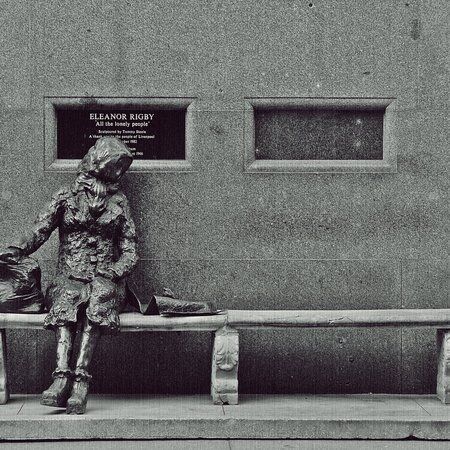
The Ongoing Legacy of Eleanor Rigby
Continued interest in connecting the song’s Eleanor Rigby with a real-life person occurred in 2008, when an official document was discovered, signed by McCartney, and sold at auction for £115,000. The historical document listed the wages paid by Liverpool City Hospital dating from 1911. Among the employees was Eleanor Rigby, whose 16 year old self had signed the document. The discovery of the document was of interest because of how it seemingly confirmed the real Eleanor was the true inspiration all along.
“Eleanor Rigby is a totally fictitious character that I made up ... If someone wants to spend money buying a document to prove a fictitious character exists, that's fine with me.”
Our Thoughts…
Eleanor Rigby's grave in Liverpool is a place where the realms of music and reality intertwine. It is a tangible reminder of the magic and mystery that The Beatles brought into the world through their music. It stands as a testament to the ability of art to transcend time, transforming “a normal name” into a symbol that continues to resonate with generations of music lovers. Visiting Rigby’s unassuming grave is not just a journey to pay respects; it's a chance to connect with the profound and lasting impact of music and the enduring spirit of Eleanor Rigby.
Interested in finding more places like this? Try one of our Treasure Hunts In Liverpool - untangle cryptic clues as a team, as you are taken on a journey to the most unique, unusual and bizarre corners of England.
